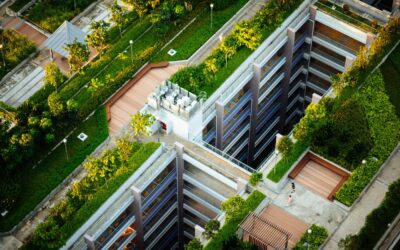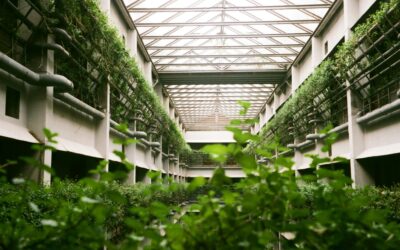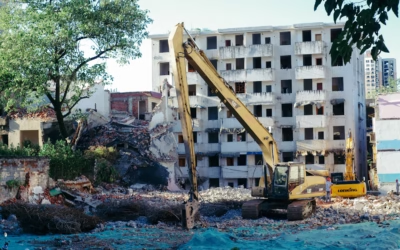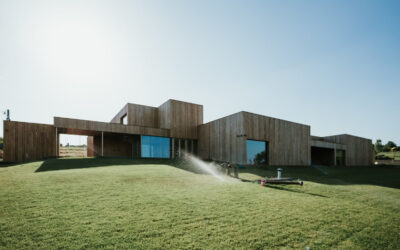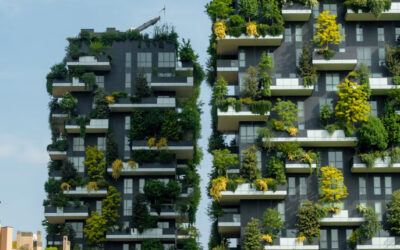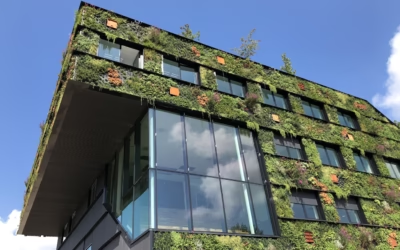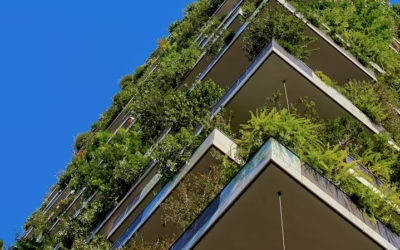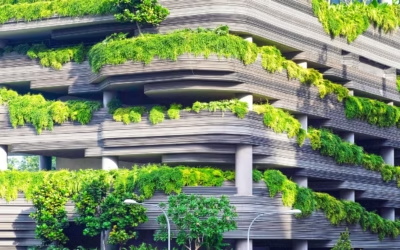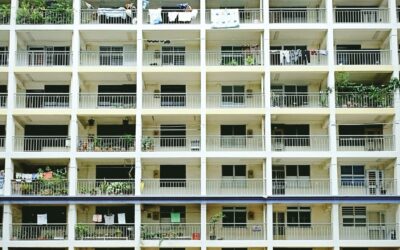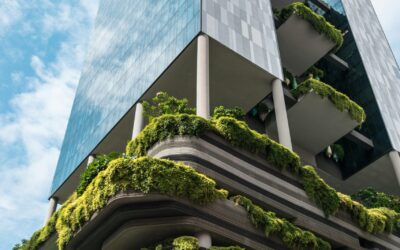Knowledge Share
Discover the latest news, publications, and insights from ADW Developments.
Applying Whole-Life Thinking to BREEAM Version 7 Projects
In our knowledge share, we have discussed BREEAM 7 launch already and the way it represents a significant shift in how sustainability performance is defined and assessed within the built environment. The updated scheme places far greater emphasis on whole-life...
World Soil Day: Why Soil Health Matters for Sustainable Development and Low-Carbon Construction
Every year, World Soil Day, which is on the 5th of December, raises awareness of one of the most valuable and most undervalued natural resources on the planet. Soil underpins food security, biodiversity, carbon storage, and climate resilience. Yet in the built...
Third-Party Verification of Mat 01 and Whole Life Carbon Under BREEAM V7
As the UK construction sector accelerates towards net zero, Whole Life Carbon (WLC) reporting has become essential for responsible development, planning approval and sustainability certification. Under BREEAM UK New Construction Version 7 (V7), the Mat 01 Lifecycle...
Embodied Carbon Reduction Through Early Opportunity Mapping
Carbon Opportunity Mapping reveals where carbon hides before design begins. Early choices shape most of a project’s emissions, and once the design reaches a fixed point, the chance for cutting carbon narrows sharply. This is why in today's Knowledge Share, we break...
Understanding BREEAM MAN 05: POE Requirements, Evidence and Compliance
As the built environment sharpens its focus on real operational performance, BREEAM’s MAN 05 Post-Occupancy Evaluation (POE) has become an increasingly important part of successful project delivery. It ensures that buildings perform as intended once occupied. This...
Verify As-Built Carbon and Meet Compliance
Achieving Whole Life Carbon (WLC) compliance no longer stops at the design stage. Under BREEAM UK New Construction V7 and GLA London Plan guidance, the true challenge lies in demonstrating that your as-built scheme performs as predicted, and that the assumptions made...
Why Post-Occupancy Evaluation (POE) Matters More Than Ever
Post-Occupancy Evaluation (POE, discussed here) has moved from being an optional extra to an essential part of responsible building delivery. It is the evidence-based link between design ambition and operational reality. While many teams now recognise what POE is,...
How Carbon Credits and Circular Materials Are Shaping Sustainable Construction
Developers are under pressure to build sustainably and think circular. The link between carbon credits and material reuse brings both opportunity and challenge. This growing space connects financial value with real carbon reduction. It rewards innovation, reduces...
Understanding Whole Life Carbon: Building a Sustainable Future
Whole Life Carbon (WLC) is central to tackling climate change within the built environment. As we’ve explored in previous , it accounts for all greenhouse gas (GHG) emissions associated with a building or infrastructure project, ranging from the extraction of raw...
The Power of Pre-Demolition Audits for a Circular Economy
As established in all of our previous articles, the construction and demolition sector generates vast amounts of waste, with valuable materials often lost to landfill. As the shift towards a circular economy accelerates, Pre-Demolition Audits (PDAs) are emerging as a...
How to Design Buildings That Keep Materials in Play
Most buildings end up being demolished, stripped, and replaced. Forward-thinking designers are challenging this approach, asking: What if every building could serve as a materials bank? The future of construction lies in keeping materials in use for longer and...
How Digital Twins and BIM Are Driving Whole Life Carbon Reduction
The construction industry, a major source of global emissions, is entering a new digital era. At the forefront of this shift are Digital Twins and Building Information Modelling (BIM).These technologies are transforming how we design, build, and operate buildings. By...
The Power of Material Efficiency Assessments and BREEAM Mat 06 in Sustainable Construction
BREEAM Mat 06 is a key topic in sustainable construction, and today we take a closer look. As one of the largest consumers of raw materials and producers of waste, the construction industry faces growing pressure to build more responsibly. Material Efficiency...
Financing Sustainable Construction: The Rise of Green Mortgages
As we have explored in our previous articles, financing the shift to sustainable construction is no longer just a policy goal. It’s becoming a financial reality. Investors and lenders are increasingly backing projects that deliver both environmental and economic...
Decoding Whole Life Carbon Assessment for Sustainable Buildings
We’ve previously discussed the importance of carbon assessments in shaping a more sustainable built environment. Building on that foundation, Whole Life Carbon Assessment (WLCA) takes this understanding a step further. It provides a comprehensive framework for...
Decarbonising Existing Buildings: A Critical Path to Net Zero
Achieving net zero by 2050 puts the spotlight firmly on our existing buildings. While new, energy-efficient developments get plenty of attention, the majority of the building stock that will exist in 2050 is already here. This presents a significant challenge, and an...
Why Material Durability Matters in Sustainable Construction
In our Knowledge Share, we have already discussed Material Adaptability in Sustainable Construction and The Importance of Durability and Resilience in Construction, and today, we will explore the crucial role of material durability. A sustainable built environment...
Climate Change Adaptation in the Built Environment
Climate change is no longer a distant threat; it is a present reality, already evident in extreme and unpredictable weather patterns that strain communities, infrastructure, and the environment. From rising temperatures and shifting rainfall to increasing sea levels,...
The Importance of Durability and Resilience in Construction
Durability and resilience are essential for buildings to withstand climate extremes, resource pressures, and shifting user needs. Today's Knowledge Share explores how robust materials, resilient design, and adaptable systems can reduce Whole Life Carbon, preserve...
Material Adaptability in Sustainable Construction
How do we create buildings that meet today’s needs and also stay relevant in the future? Rapid technological change, shifting social priorities, and the growing impacts of climate change make this question urgent. The answer is not just durable or low-carbon...
Life Cycle Costing for Long-Term Value in Construction
In the construction industry, financial decisions are often shaped by immediate costs. Yet, achieving truly sustainable buildings requires a longer-term perspective, one that accounts for how a development will perform, operate, and evolve across its entire lifespan....
The Power of Circular Economy Statements in Construction
The construction industry is one of the world’s most resource-intensive sectors, consuming large quantities of materials and producing considerable waste. For decades, the focus has been on delivering projects quickly and efficiently, often with limited consideration...
Policy and Regulatory Drivers for Whole Life Carbon in the UK Built Environment
The UK’s commitment to achieving net-zero greenhouse gas emissions by 2050 places the built environment under growing pressure to cut carbon. Historically, policy has focused on operational emissions from heating, cooling, and lighting buildings. But as buildings...
The Importance of Security Needs Assessments and SABRE in Construction
Security is a fundamental part of modern building design and construction.Project teams must consider it from the earliest stages to protect occupants and assets, safeguard sensitive information, and ensure business continuity. Effective security goes far beyond...
Unlocking Building Performance with Post-Occupancy Evaluation (POE)
In building design and construction, success is measured not just by completing a project. But also by how well it performs once occupied. The real test begins when people move in and use the space. Consequently, Post-Occupancy Evaluation (POE) becomes invaluable....
What is a +A2 EPD? Understanding the New Standard for Environmental Product Declarations
If you're involved in sustainability-led construction, procurement, or life cycle assessment (LCA), understanding the transition to +A2 EPDs is critical. Environmental Product Declarations (EPDs) are becoming the common language for assessing the environmental...
UK Net Zero Carbon Buildings Standard 2025: Complete Guide – Part 3
Welcome to our comprehensive guide to the UK Net Zero Carbon Buildings Standard. If you missed our earlier features, you can catch up on Part 1 and Part 2. In this final instalment, Part 3, we will discuss real-world examples and key benchmarks, timelines,...
UK Net Zero Carbon Buildings Standard 2025: Complete Guide – Part 2
As promised last week, we continue our focus on the UK Net Zero Carbon Buildings Standard (NZCBS) 2025. In today’s article, we first break down the types of emissions it covers, the life cycle reporting requirements, current performance limits, and the key design and...
UK Net Zero Carbon Buildings Standard 2025: Complete Guide – Part 1
Are you a building owner, developer, or sustainability professional navigating the path to net zero? This post breaks down the UK Net Zero Carbon Buildings Standard (NZCBS) into clear, actionable insights to help you understand its impact and prepare for compliance....
BREEAM V7 Is Here. Let’s Make Sure You Actually Get the Credits
BREEAM UK New Construction Version 7 isn’t just another update. It’s a signal that sustainability compliance is tightening and that planning success, ESG funding, and performance credibility now go hand in hand.For developers, architects, and project managers, it...



